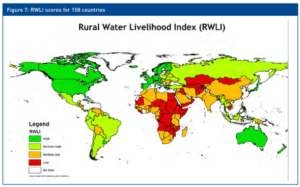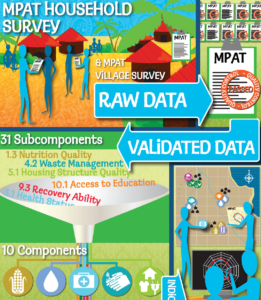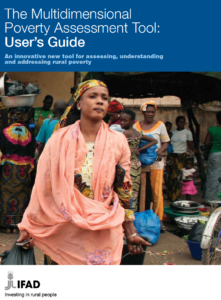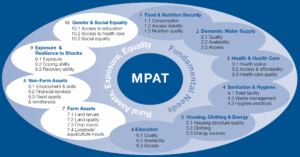The Rural Water Livelihoods Index. Working Paper
 Abstract/Summary: The Rural Water Livelihood Index (RWLI) is calculated on the basis of components and indicator values representing each of these four dimensions. The resulting composite index reflects the values for these four dimensions, and on this basis, judgements can be made on how water management might be improved. Each of the four dimensions (components) of the RWLI are represented by two subcomponents, which are combined using a weighted average. In this report, this framework is applied at the national scale, but the approach can be used at any scale as long as appropriate data is available. The purpose of the RWLI is to provide policy makers and planners at the national level an overview of where their country stands relative to others (much like the Human Development Index), and relative to themselves over time, to examine and monitor progress being made as a result of actions taken. This in turn will hopefully allow for better targeted water related interventions to improve rural livelihoods. Through the measurement of these key components, it will be possible to assess which of the four dimensions are most likely to benefit from interventions. Appropriate interventions are context-specific and will have to be identified on a country-by-country basis since contexts differ so widely (i.e., responses to address the reported states will be country and site-specific). However, a general Response Matrix is being developed to provide planners and policy makers a conceptual framework to guide this process and at a macro-level the index values help national-level planners identify which sectors might be most in need of assistance.
Abstract/Summary: The Rural Water Livelihood Index (RWLI) is calculated on the basis of components and indicator values representing each of these four dimensions. The resulting composite index reflects the values for these four dimensions, and on this basis, judgements can be made on how water management might be improved. Each of the four dimensions (components) of the RWLI are represented by two subcomponents, which are combined using a weighted average. In this report, this framework is applied at the national scale, but the approach can be used at any scale as long as appropriate data is available. The purpose of the RWLI is to provide policy makers and planners at the national level an overview of where their country stands relative to others (much like the Human Development Index), and relative to themselves over time, to examine and monitor progress being made as a result of actions taken. This in turn will hopefully allow for better targeted water related interventions to improve rural livelihoods. Through the measurement of these key components, it will be possible to assess which of the four dimensions are most likely to benefit from interventions. Appropriate interventions are context-specific and will have to be identified on a country-by-country basis since contexts differ so widely (i.e., responses to address the reported states will be country and site-specific). However, a general Response Matrix is being developed to provide planners and policy makers a conceptual framework to guide this process and at a macro-level the index values help national-level planners identify which sectors might be most in need of assistance.



